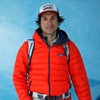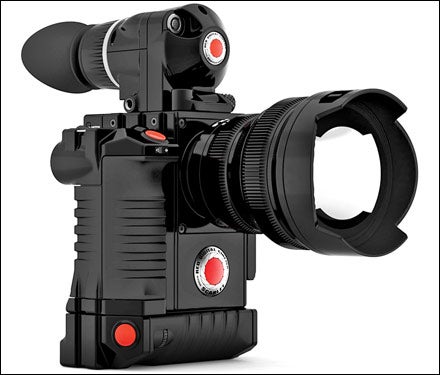CALL 2009 THE YEAR of convergence, the point at which each frame produced by a movie camera came to have more resolution than any photo in this magazine. Red Digital Cinema, started in 2006 by Oakley Eyewear founder Jim Jannard, is set to release two breakthrough digicams, the Scarlet and the Epic, later this year. The new devices will change the way everything from feature films to action sports to nature shows are shot.
Both the Scarlet and Epic are small┬Śthree pounds, and no bigger than a home video recorder┬Śyet the high-end Epic model makes movies with better resolution than a 200-plus-pound Imax film camera, while the consumer-level Scarlet is nearly as good as the cameras used to shoot Hollywood features. And both cost a fraction of their competition, from $3,000 for the base-model Scarlet up to $53,000 for the Imax-beating Epic. If you’re used to shopping for digital still cameras by megapixels┬Śa good one now gets 10 to 20┬Śconsider that the Epic shoots up to 260. That’s not an incremental shift; it’s like releasing the iPhone in 1980.
Engineers at Red did it by ignoring the best tech now in use and starting from scratch. Instead of basing their sensor┬Śthe digital “eye” onto which the lens projects the image┬Śon the ones used by modern high-def recorders, they built a proprietary model called Mysterium that’s more like the sensor in a still camera. Then they invented new circuitry and computer code to compress and store the raw data pouring out of the thing. “We’re a small gunslinger team that doesn’t think like a normal company,” says Ted Schilowitz, Jannard’s right-hand man at Red.
Two years ago, when Jannard announced his first-generation Red One at the National Association of Broadcasters convention in Las Vegas without so much as a working prototype, the film industry was skeptical but bought in anyway. Jannard claimed that his machine would rival the Hollywood-standard 35mm motion-picture camera but cost $17,500, roughly a month’s rent on a 35mm. Now, hundreds of feature films have been shot on Red. Lord of the Rings director Peter Jackson switched to it. Steven Soderbergh uses it. The low-budget The River Why (see our February issue) was shot on Red.
“We see people taking these out everywhere,” says Schilowitz. “National Geographic has taken the Red One hundreds of feet underwater, and the Scarlet is half the size and twice the resolution.” Sports photographers will get a boost, too. “Imagine shooting 65-megapixel stills at more than 50 frames per second,” raves Schilowitz. “You’re shooting motion and stills in combination all the time.”
We’ll believe it when we see it┬Śand we can’t wait to see it.


